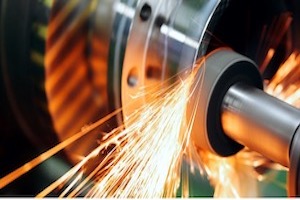By Harold Jackson , Associate Attorney, Braumiller Law Group
There are new tariff classifications for machinery under Chapter 84 of the Harmonized Tariff Schedule of the United States (“HTSUS”). The changes to Chapter 84, as well as many other areas of the HTSUS, took effect on January 27, 2022, pursuant to Presidential Proclamation 10326 (December 23, 2021). Many of the changes to Chapter 84 were made to keep up with technological innovations and commercial use. Below are the key changes you need to know.
1. Duties on 3D Printers
Machines for additive manufacturing, a.k.a. 3D printers, are now covered under heading 8485 of the tariff schedule – at the cost of ad valorem duties between 2.5% and 3.1%. The new heading comes with a new definition for “additive manufacturing” in Chapter Note 10, which means the formation of physical objects, based on a digital model, by the successive addition and layering, and consolidation and solidification, of material (for example, metal, plastics or ceramics) (also referred to as 3D printing) and that 3D printers are not classified under any other heading.
Before this reorganization, 3D Printers were classifiable under various headings such as 8441, 8463, 8465, 8466, 8477, 8475, 8477, and 8479. Now, the 3D printers are divided by additive (deposit), whether that be metal, plastic or rubber, plaster, cement, ceramics or glass, or some other combination. Parts of 3D printers are classified under subheading 8485.90; parts for 3D printers using plastic or rubber deposits are 3.1% ad valorem, while all other parts enter duty-free.
2. Overhaul for Drying Machines and Freeze-Drying Equipment – Duty-Free
Heading 8419 underwent two significant changes. The first was the addition of lyophilisation apparatus, freeze drying units and spray dryers under subheading 8419.33, which is divided into subheadings by use in agricultural products (8419.33.10) or other products (8419.33.50). The remaining provisions for dryers fall under the “other” category.
Second, subheadings 8419.33 through 8419.39 were reorganized with the addition of new subheadings. Subheading 8419.34.00 covers agricultural products that are not freeze-drying equipment. Subheading 8419.35 covers dryers, for wood, paper pulp, paper or paperboard that are not freeze-drying equipment, which is subdivided into subheadings for dryers for wood, for dryers for paper pulp, paper or paperboard.
Subheading 8419.39.02 is a basket provision for other dryers not enumerated above, which is subdivided into dryers for food and beverages and dryers that are not.
3. Catalytic Converters Align with WCO Worldwide – Duty-Free
In an effort to align classification of catalytic converters worldwide on the six-digit level, the new subheading 8421.32.00 covers “catalytic converters or particulate filters, whether or not combined, for purifying or filtering exhaust gases from internal combustion engines.” This eliminates the eight-digit subheading 8421.39.40 that covered catalytic converters in the past.
The changes also mark the end of subheading 8421.39.80 for “other” filtering or purifying machinery and apparatus for gases, which is divided into several 10-digit subheadings for dust collection and air purification equipment for machine tools and other types (8421.39.8005 and 8421.39.8015), industrial gas cleaning equipment that is differentiated between electrostatic precipitators and other types (8421.39.8020 and 8421.39.8030), gas separation equipment (8421.39.8040), pneumatic fluid power filters at 550 kPa or greater (metric pressure) (8421.39.8060), and a narrower basket provision for “other” filtering or purifying machinery and apparatus for gases.
4. Overhaul for Machine Tools for Metalworking – Dutiable at 4.4%
Heading 8462 for machine tools used in metalworking was updated, with additions including slitting lines, cut-to-length lines, and tools for working metal by nibbling, while excluding rolling mills. A running theme across the subheadings of 8462 is to distinguish between machines that are numerically controlled and those that are not.
With updated definitions, subheadings 8462.32.10 through 8462.39.00 cover slitting lines, cut-to-length lines, and other shearing machines for flat products. These subheadings do not include tools for working tube or combined punching and shearing machines, which are covered under subheadings 8462.42 through 8462.59.00.
Subheadings 8462.22 through 8462.29 cover tools for flat products that are used for bending, folding, straightening or flattening machines, including press plates. Profile forming machines, numerically controlled press brakes, panel benders, and roll forming machines are distinguished categories with their own subheadings.
For hot working, Subheadings 8462.11 and 8462.19.00 cover hot forming machines for forging, die forging, including presses, and hot hammers, distinguishing those that are used for closed die forging. For cold pressing, Subheadings 8462.61 through 8462.63.80 cover cold metal working presses, distinguishing those that are hydraulic, mechanical, and servo-presses.
5. Other Changes to Chapter 84
Below are other notable changes and additions to Chapter 84.
- Industrial Robots & Solar Water Heaters – Like catalytic converters, were moved to the six-digit level to conform with WCO expectations under 8428.70.00 (duty-free) for industrial robots and 8419.12.00 (duty-free) for solar water heaters.
- Gas-Tight Biological Safety Cabinets are now accounted for under the new subheading 8414.70.00 (duty-free).
- Refrigerator-Freezers with drawers are classified under subheading 8418.10 along with separate external doors or drawers (duty-free).
- The subheadings 8482.40.00 and 8482.50.00 for ball bearings now specifically include cage and roller assemblies.
Conclusion
Importers should consult Outside Customs and Trade Counsel if they are having difficulty interpreting the new HTSUS, which is a legal document with complicated rules of interpretation. Customs Counsel can give companies an analysis of the classification of their merchandise, obtain a binding Customs Ruling from Customs and Border Protection, and challenge Customs’ interpretation of the HTSUS via Protest or Court Action.
Read more articles by this author: https://www.braumillerlaw.com/author/harold/

